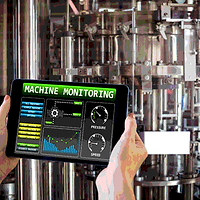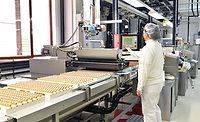Studies have shown that roughly one-third of the food produced in the world for human consumption every year—approximately 1.3 billion tons—gets lost or wasted. Food losses and waste amounts to roughly US$ 680 billion in industrialized countries and US$ 310 billion in developing countries. Major factors accounted for these figures are lack of food processing, storage, and distribution facilities.
To reduce food waste, its important to process/store/transport food so that it is fit for consumption; that’s why the food processing industry has emerged as an important segment in terms of its contribution to the global economy. With an approximately market size of US$ 2,000 billion and potential growth of more than 5%, this sector is reaching new heights year after year, resulting in expansion within businesses and new start-ups.
With increasing numbers of units and varieties of processed foods, the quality of the product takes center stage. While most companies maintain food safety and quality during manufacturing, it’s equally important to maintain safety and quality while distributing and storing food products, so that when the product reaches the consumer, the signature taste and quality that was maintained during manufacturing can be enjoyed. It’s all about caring about the safety and quality of your products during distribution and storage in the warehouse.
Other than waste, food safety incidents are serious concerns that may result from poor storage conditions and distribution practices. Daily, we find news regarding food safety incidents resulting from issues like temperature variations, pest control, and allergen and microbial cross-contamination.
In 2010, as a result of numerous sanitation and temperature control problems during storage, a meat producer was responsible for 10 cases of listeriosis after consumers ingested chicken salad and prepackaged, diced celery. Five people died as a result of this microbial contamination event. All products were recalled, as it seemed likely that other fresh vegetable products would have become contaminated.
In 2018, a world-famous candy brand was recalled in Canada because of possible contamination from a rodent infestation at the manufacturing plant.
Another example was a rice processor who recalled its products due to a possible insect (weevil) infestation, which made its products unsafe to eat.
Thus, it’s time to put the same focus (like organization do while manufacturing) on storage and transportation to mitigate food safety incidents and reduce food waste.
Most organizations follow a quality/food safety management system while manufacturing/processing food products; in same manner, we can design a storage and transportation quality management system (STQMS).
STQMS works on the PDCA cycle:
Plan: Plan all the elements of the STQMS and provide resources
Do: Implement all the elements as per the plan
Check: Check the effectiveness of the system
Act: Continually improve the system
A STQMS may have the following key elements:
Scope of the STQMS: Scope is key for any management system. A detailed scope will help the entire management team allocate resources and draft the STQMS plan for implementation. The scope helps outline the boundaries of the system.
Management Commitment: Management commitment is critical for the STQMS. For the effective implementation of STQMS, management must be committed to provide the necessary resources in terms of personnel, materials for training and safety, etc.
Document Control: It’s critically important to document all the procedures and policies and define the record keeping requirements. A document control system will help every team follow the right processes at the right time and also retain records in the correct manner.
Training and Development: Training and development are key to the effective implementation of STQMS, so it must be carried out accordingly.
Infrastructure and Practices: The most important element of the STQMS is infrastructure. Also essential are Good Warehousing Practices, Good Housekeeping Practices, and Good Transportation Practices. Poor Infrastructure and ineffective implementation of these practices will affect the success of the STQMS.
Prerequisite Programs: Various prerequisite programs like Good Manufacturing/Warehousing Practices, pest control, loading and unloading, temperature control, Good Housekeeping Practices, cleaning and sanitation, infrastructure maintenance, etc. are the backbone of the STQMS to reduce food safety incidents.
Inventory Management: Inventory management reduces the possibility of stock loss due to expiry and poor planning.
Internal/External Audit Management: Managing the audit process helps identify issues that run counter to food safety and quality objectives.
Corrective/Preventive Action and Continual Improvement: Correcting issues and implementing preventive measures are key to continual improvement in STQMS.
In later articles, we will discuss these elements of STQMS in detail so that organizations can effectively maintain quality while storing and distributing their food products.
Anurag Mishra is a quality and food safety specialist in Mars Wrigley Confectionery and can be contacted on Anurag.ft@gmail.com.



